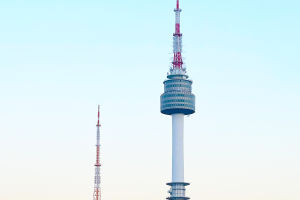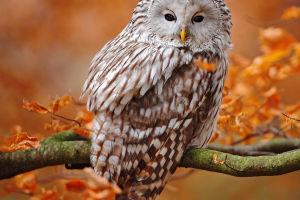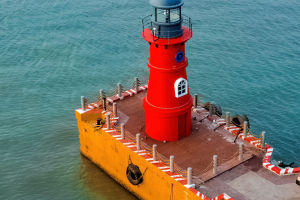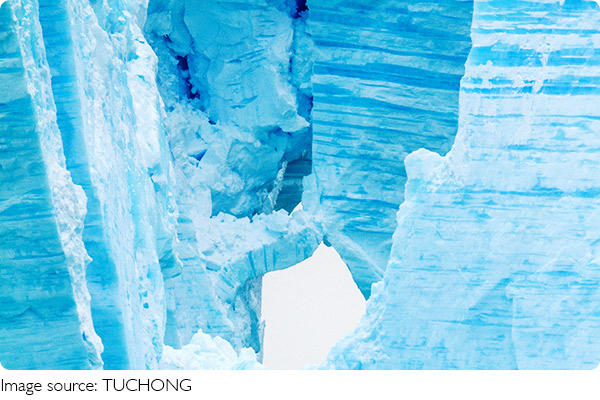
Arctic Elegance Expedition

Situated at opposite ends of the Earth, if the Antarctic is considered the end of the world—a serene and dreamlike white sanctuary—then the Arctic is the pinnacle of the world, a paradise for adventurers.
Located within the Arctic Circle, the Svalbard archipelago, meaning "cold coast" in Norwegian, is often referred to as the "northernmost city on Earth" and one of the "coldest places in the world" due to its unique geographical position.
It is the last settlement as humans push northward and is the gateway for explorers venturing into the Arctic. Here, life and death are at odds, and it is a city that experiences perpetual daylight or endless nights.
This is the closest accessible location for ordinary tourists to the North Pole. However, a journey to Svalbard goes beyond mere sightseeing. Each individual can experience a diverse and intricate range of emotions.
Related
 Vertical greening enhances spaces, combining aesthetics with environmental benefits for harmonious and lively living.
Vertical greening enhances spaces, combining aesthetics with environmental benefits for harmonious and lively living.
 Seoul is a thriving metropolis, that boasts N Seoul Tower, a romantic landmark offering breathtaking views.
Seoul is a thriving metropolis, that boasts N Seoul Tower, a romantic landmark offering breathtaking views.
 Urgent need for global cooperation to address cybersecurity challenges and ensure network resilience.
Urgent need for global cooperation to address cybersecurity challenges and ensure network resilience.
 Owls in Harry Potter inspire awe, but real-life ownership poses challenges and conservation concerns.
Owls in Harry Potter inspire awe, but real-life ownership poses challenges and conservation concerns.
 Subway and light rail: urban transit options providing efficient city mobility.
Subway and light rail: urban transit options providing efficient city mobility.
 Maritime safety: The history of lighthouses.
Maritime safety: The history of lighthouses.
As you explore this place and witness the hardships and achievements left behind by humanity, aspirations, desires, and longings in the mundane world blend with the Arctic landscape of fierce winds, auroras, colorful clouds, blizzards, and the unique flora and fauna, making you feel connected to the land and marvel at the wonders of creation.
As the Norwegian author Odd reflects in "Days Like Years" in Svalbard, one can truly grasp the essence of being human. Though not divine, you are only a step below, a living and responsible being for oneself—an integral part of the miraculous creation of the universe.
All the unheard-of and astonishing experiences may sound distant and ethereal until the plane lands at the Longyear Airport on the perennially frozen ground. Here, you begin to understand the meaning of the "cold coast tangibly."
Longyearbyen, located in the Svalbard archipelago, holds the title of the world's northernmost city at 78°13' N latitude. It is only 1300 kilometers from the North Pole and boasts several world geographical records, including the northernmost university (Svalbard University), museum, and post office.
With a population of around 1800 residents, mostly Norwegians followed by Russians, Longyearbyen is the only city in the world where determining death is illegal.
Due to extremely limited medical resources and the permafrost layer beneath the surface preventing natural decomposition, viruses persist here indefinitely. Unless sudden death occurs, patients and elderly individuals must leave Longyearbyen for treatment and care in other Norwegian hospitals. Moreover, laws prohibit childbirth on the island, and pregnant women must depart one month before delivery.
Svalbard, characterized by rugged terrain, lies within the Arctic Circle and is rich in marine life, such as walruses, seals, Arctic foxes, and whales. The region also harbors coal, phosphate, iron, oil, and natural gas deposits. 65% of Svalbard's area is designated as a natural park to preserve its unique flora and fauna.
In March, the lowest temperature in Longyearbyen hovers around minus 15 degrees Celsius, which may not sound overly severe, but simple numbers fail to convey the actual sensory experience. Once you leave the city center, you depart from human gathering places, and the vast icy expanse is yours alone.
The piercing cold penetrates through thick soles into your bones, and the cold wind attacks from all directions, leaving you with no escape. Due to the stimulating cold, tears become a natural adhesive in the low-temperature environment, freezing eyelids shut and creating a sense of despair that cannot be expressed through tears.
There is an unparalleled sense of sanctity and solemnity in this extremely cold northernmost region, where the climate is harsh. Despite having less than 2000 permanent residents, Longyearbyen is home to over 5000 polar bears—more than one bear per person.

March is the season when polar bears search for food, and local guides issue a warning: "If you plan to go to the polar bear territory on the other side of the ice cap, you must be armed!" Beneath the pristine white surface of this northernmost homeland lies the hidden danger, adding a mix of anxiety and excitement.
Apart from the ever-present threat of polar bears, the skies above the tundra are always full of surprises. Midway through the journey, the photographer beside you suddenly stops, raises the camera towards the right, and as you follow the lens direction, you witness rainbow-like clouds appearing on the snowy mountain, resembling an angelic halo hovering at the summit. Perhaps this is the legendary "rainbow auspicious cloud."